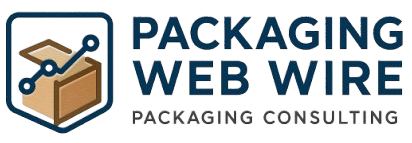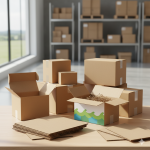The global PFAS-free food packaging market is on a robust growth trajectory, projected to expand from USD 45.05 billion in 2024 to USD 84.96 billion by 2034, at a CAGR of 6.55%. This surge is driven by rising consumer demand for sustainable and non-toxic packaging alternatives across the food service industry.
In 2024, North America dominated the market, with wraps, liners, and coated paperboards leading adoption. Quick-service restaurants (QSRs) remain the largest users. However, Europe is poised for faster growth in the coming decade, fueled by increasing regulations and consumer preference for PFAS-free solutions. Products like clamshells and bioplastics are set to gain significant traction, particularly in retail applications.
This article highlights key companies shaping the PFAS-free food packaging industry with a snapshot of their offerings and market presence.
Key Players in the PFAS-Free Food Packaging Market
1. Huhtamaki
About: A Finnish global leader in sustainable packaging solutions, Huhtamaki is pioneering innovations in PFAS-free materials.
Products: Specializes in fiber-based packaging, molded fiber trays, and recyclable paper cups.
Market Cap: Approx. USD 3.5 billion.
2. Footprint
About: Footprint, based in Arizona, USA, focuses on replacing plastic with plant-based materials for food packaging.
Products: Known for compostable clamshells, cutlery, and molded fiber food containers.
Market Cap: Private company, valued at over USD 1 billion in recent funding rounds.
3. Georgia-Pacific
About: A Koch Industries subsidiary, Georgia-Pacific is a major North American packaging and paper products supplier.
Products: PFAS-free coated paperboard, food service trays, and liners.
Market Cap: Part of Koch Industries (estimated total value USD 115 billion).
4. Stora Enso
About: This Nordic packaging giant emphasizes renewable materials and circular solutions.
Products: Eco-friendly board packaging, biodegradable wraps, and food-grade paper solutions.
Market Cap: Approx. USD 12 billion.
5. Vegware
About: UK-based Vegware is globally recognized for its fully compostable foodservice packaging.
Products: Hot cups, clamshells, liners, and catering disposables made from plant-based materials.
Market Cap: Private company with a growing international footprint.
6. Sabert Corporation
About: Headquartered in New Jersey, Sabert is a leading manufacturer of innovative food packaging solutions.
Products: PFAS-free paperboard trays, clamshells, and eco-friendly cutlery.
Market Cap: Private company, estimated revenue USD 1 billion.
7. Novolex (Eco-Products)
About: Novolex owns Eco-Products, which focuses on sustainable foodservice packaging solutions.
Products: Compostable plates, bowls, and clamshells made from renewable resources.
Market Cap: Private company; Novolex revenue exceeds USD 4 billion annually.
8. Biopak
About: An Australian-based company offering compostable packaging options to food service businesses globally.
Products: Sugarcane fiber clamshells, bioplastic cups, and takeaway containers.
Market Cap: Private company with strong growth in Asia-Pacific and Europe.
9. Genpak
About: A leading North American food packaging manufacturer dedicated to innovative PFAS-free solutions.
Products: Compostable containers, paper-based wraps, and trays.
Market Cap: Private company with multiple manufacturing locations across the U.S.
10. Duni Group
About: Headquartered in Sweden, Duni Group delivers premium sustainable packaging and tabletop solutions.
Products: Compostable tableware, paper wraps, and takeaway containers.
Market Cap: Approx. USD 1 billion.
Market Outlook (2025–2034)
-
2025 Market Valuation: USD 48 billion
-
2034 Forecast: USD 84.96 billion
-
CAGR: 6.55%
-
Regional Leaders: North America (2024), with Europe projected to lead in growth by 2034.
-
Segment Leaders: Wraps, liners, and coated paperboard in 2024; clamshells and bioplastics gaining momentum.
-
End-Use Insights: Quick-service restaurants dominate currently, with retail expected to surge.
Conclusion
As regulations tighten globally and consumer demand for non-toxic packaging accelerates, these PFAS-free food packaging companies are well-positioned to lead the transition. Their innovation in materials and designs will shape the sustainable packaging landscape for years to come.
Source : https://www.towardspackaging.com/insights/pfas-free-food-packaging-market-sizing



